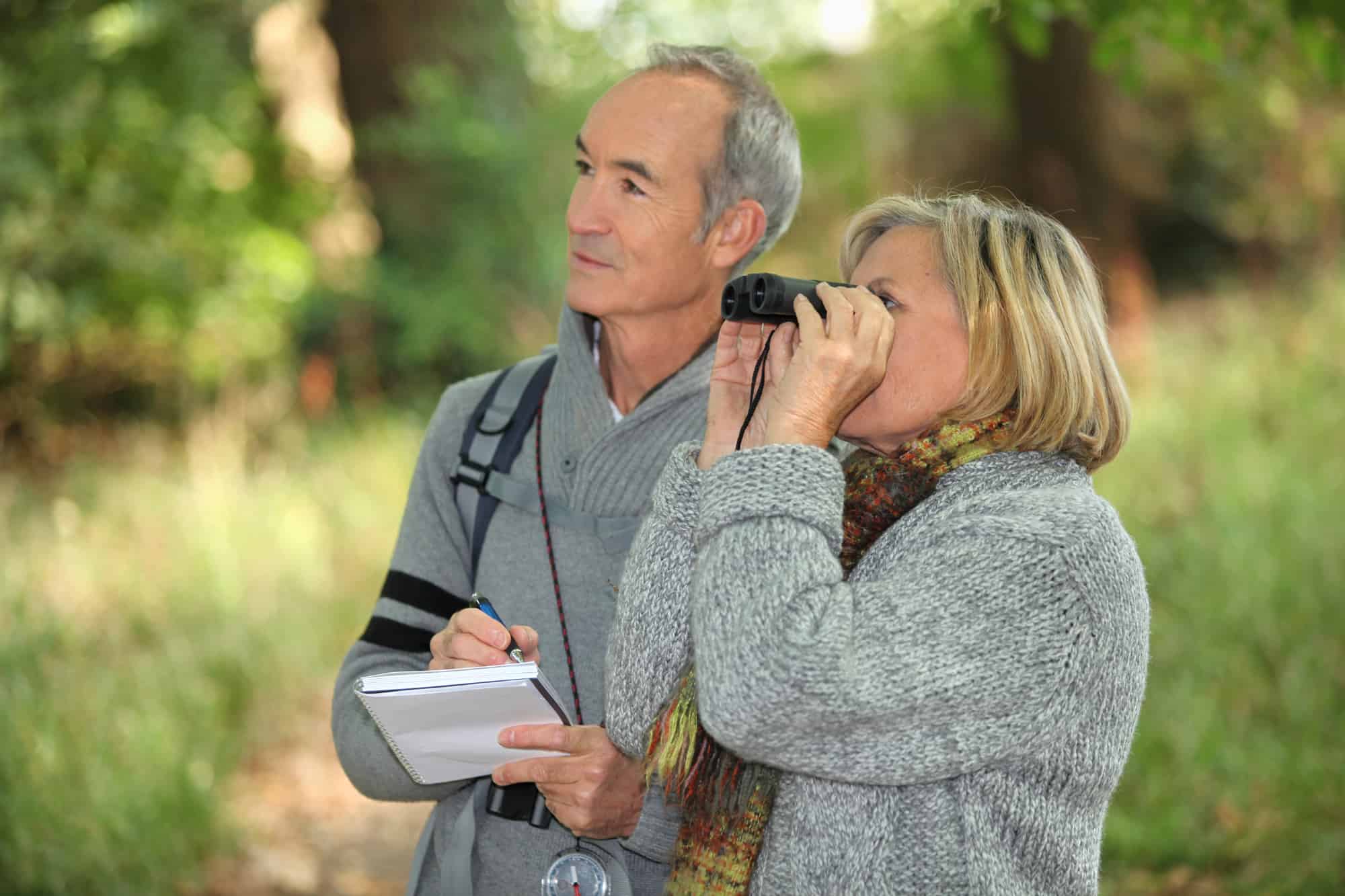The best compact binoculars for birding have many specific attributes. In this guide, discover what makes a great pair of compact binoculars for nature lovers and easily select the one that fits your birdwatching style, requirements, and budget.
Have you started shopping for a pair of compact binoculars for birding? It’s overwhelming, isn’t it? So many models to choose from with different numbers and other features you may not have heard of before. It’s hard to know what features are important and which ones you don’t need to pay attention to.
That’s how I felt when I started shopping for a compact binocular to use for birdwatching. The more I learned about them, the less confident I felt about buying one. It was this frustration and absence of real information that motivated me to research compact pocket binoculars myself.
I spent more than 40 hours researching to define the key features of the best pair of compact birding binoculars. The best compact birding binoculars should have these attributes:
- Magnification between 7-9x
- Objective lens size between 20-29 mm
- Roof-style prism
- Multi-coated lenses
- Single-focus controller
- Waterproof
- Fog-proof
- Weighs less than a pound
- Fits in your pocket.
- Made by a reputable optics manufacturer
- Great warranty
After investigating and analyzing more than 20 models of compact binoculars the best compact binoculars for birding became clear: It’s the Zeiss Terra ED 8×25.
Best Compact Binoculars for Birding: Top 7 Picks
Below are the 7 models that met the key requirements for a compact pair of birding binoculars. Each one has passed my analysis for being a worthy purchase depending on your budget. (Note: The two budget models meet six of the key requirements. I’ve noted the reasoning within the descriptions).
- Zeiss Terra ED 8×25
- Swarovski CL Pocket 8×25
- Swarovski Curio 7×21
- Leica Ultravid BR 8×20
- Nikon Aculon T02 8×21
- Vortex Vanquish 8×26
- Nikon ProStaff 8×25 ATB
1. Zeiss Terra ED 8×25
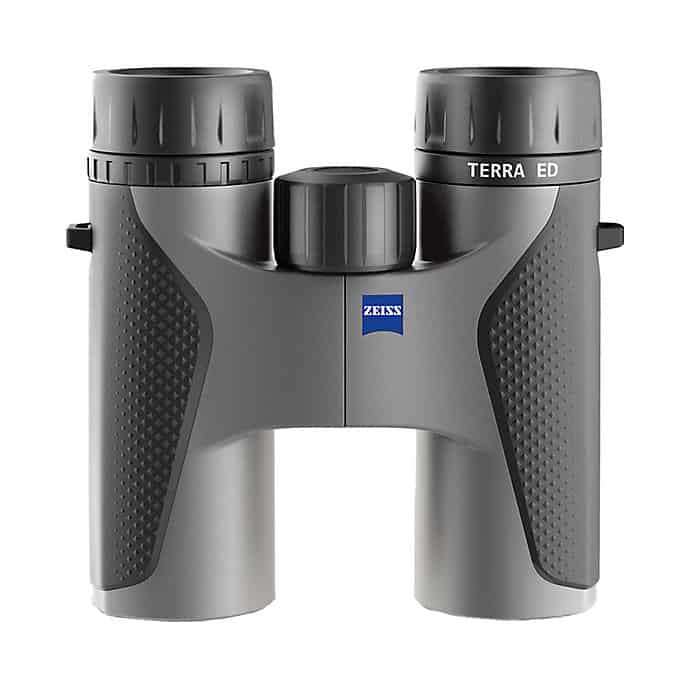
The best compact/pocket binoculars for birding for everyone.
The Zeiss Terra ED 8×25 is the perfect size to slip into any pocket. Fully coated superior-quality lenses deliver bright, crisp, and true-color images. It’s waterproof & fog-proof to survive all types of weather and super light and boasts a wide 357′ field of view.
2. Swarovski CL Pocket 8×25
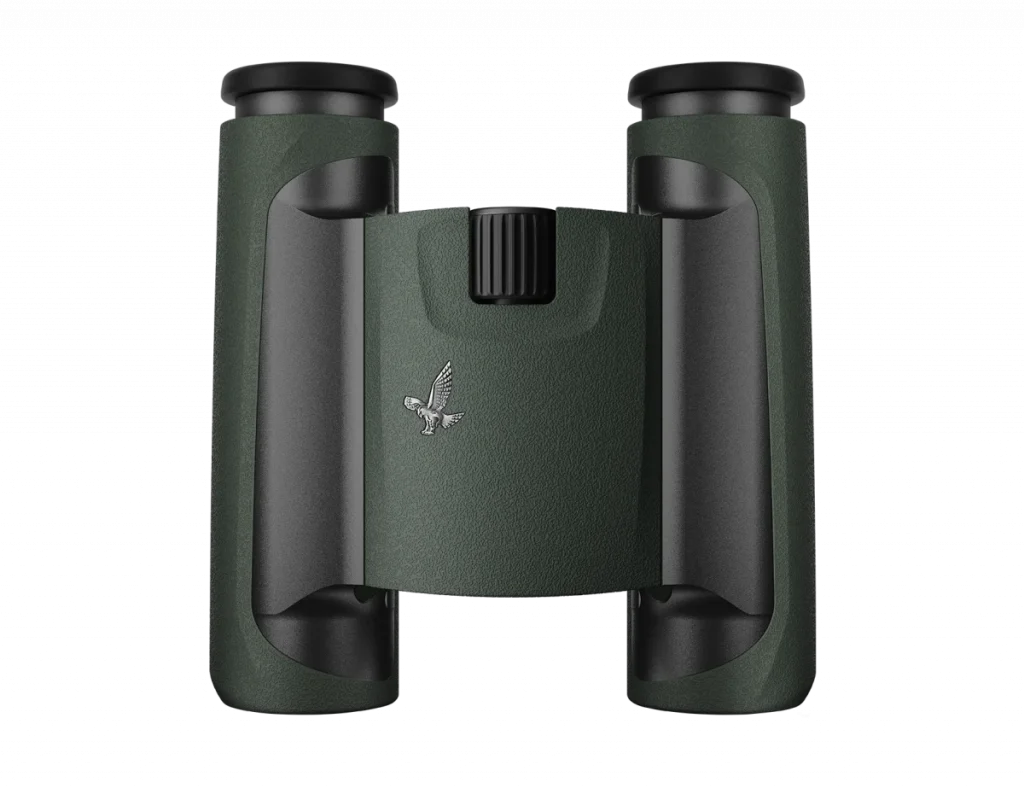
Swarovski CL Pocket 8×25
The best premium “last pair you’ll ever buy” compact binoculars for birding.
The Swarovski CL Pocket 8×25 is for the serious birder who intends to buy one pair only. There’s no denying the Swarovski reputation for excellence. Purchase a pair of their binoculars and you have them for life. Made with BaK4 glass (the best available), ground & polished by hand, and their proprietary blend of lens coatings delivers superior brightness and clarity of the subject. Waterproof & fog-proof for all-weather use and wide 357′ field of view.
3. Swarovski Curio 7×21
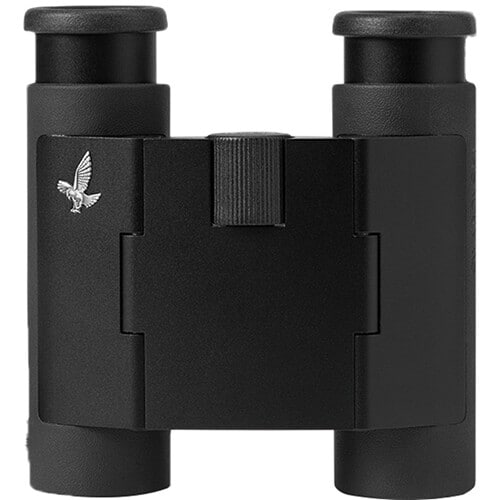
Swarovski Curio 7×21
Another premium “last pair you’ll ever buy” compact binoculars for birding.
The Swarovski Curio 7×21 is a super-compact pair for the serious birder looking for super quality in the smallest package. There’s no denying the Swarovski reputation for excellence. Purchase a pair of their binoculars and you have them for life. Made with BaK4 glass (the best available), ground & polished by hand, and their proprietary blend of lens coatings delivers superior brightness and clarity of the subject. Waterproof & fog-proof for all-weather use and has an astounding 405′ field of view.
4. Leica Ultravid BR 8×20
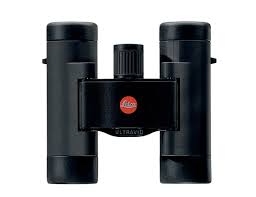
Leica Ultravid BR 8×20
Affordable premium compact binoculars.
The Leica Ultravid BR 8×20 compact binoculars are for the serious birder who wants it all – superior image quality from a premium brand, bright, clear & focused lenses thanks to multiple HD lens coatings. Love their proprietary AquaDura coating to protect against oils, debris, and scratches to the lens. All this and the best warranty in the business – up to 30 years & transferrable!
5. Nikon Aculon T02 8×21
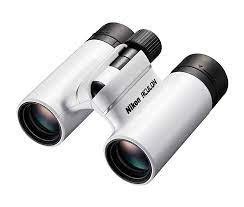
Nikon Aculon T02 8×21
Budget compact binoculars.
A good quality compact birding binoculars for under $100! Nikon has been in the optics field for more than 80 years – they can certainly be trusted. The Nikon Aculon T02 8×21 is for the beginner birder or someone not ready to invest in a Zeiss Terra or Swarovski brand. They are lower-quality glass so don’t expect spectacular brightness & crispness. They are waterproof, fog-proof, and fit into the smallest binocular body I’ve found – 3.4″ x 4.1″.
6. Vortex Vanquish 8×26
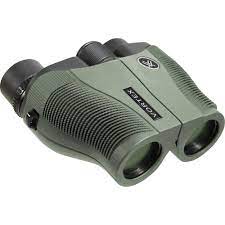
Vortex Vanquish 8×26
Another worthy budget compact binoculars.
Although roof prism is preferred for compact binoculars rather than the Porro style, I stand by the Vortex Vanquish 8×25 as a top budget pick. They’re relatively small & light and even though the glass is lower quality than the others and may not render the brightest & crispest image, they’re worth considering for your first pair of binoculars. They’re even waterproof & fog-proof.
7. Nikon ProStaff 8×25 ATB
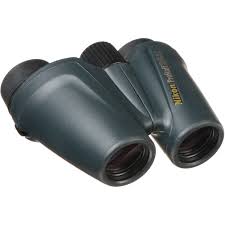
Nikon ProStaff 8×25 ATB
Another worthy budget compact binoculars.
Similar to the Vortex Vanquish, this is this budget pair is made with a Porro prism (e.g. zigzag tubes) yet is relatively small & light as well as waterproof & fog-proof. Despite the lower field of view (330′) and lower quality lens glass, these are still worthy of consideration, especially for your first pair of binoculars. You can always trade up to the Zeiss Terra or a Swarovski pair down the road.
What’s a Compact Binocular?
While there isn’t a formal industry definition of a compact binocular (also referred to as a pocket binocular), the general idea is they’re smaller and lighter than other binoculars.
So, what size is a compact binocular? Without an industry definition, we can look to binocular manufacturers for guidance. I reviewed the major binocular manufacturers and learned a majority of them append the term “compact” or “pocket” to binoculars with objective lenses smaller than 30mm.
This is logical since the larger the objective lens size, the larger the overall binocular body has to be to contain the lenses. Larger body, larger binoculars.
For the purpose of discussing compact or pocket binoculars, only optics with an objective lens smaller than 30mm are considered.
What to Look For When Purchasing Compact Binoculars for Birding
There are a lot of features available in binoculars these days. It’s hard to know what’s important for birding and what’s not. After cutting through the endless list of features and specifications, I arrived at a shortlist of key features to pay attention to when buying a compact pair of binoculars for birding. They are:
- Magnification & Objective Lens
- Prism Type
- Brightness & Sharpness
- Single Focus Control
- Field of View
- Waterproof & Fog-proof
- Eye Relief
- Warranty
- Compact Size
Magnification & Objective Lens
Every model of binoculars is accompanied by two numbers such as 8×25. The first number represents the magnification (8x) and the second is the size of the Objective Lens (25mm) located at the end of the optics’ tubes.
Magnification
The magnification needs to take that tiny bird and enlarge it to a point where you can see it up close in minute detail. An 8x pair will enlarge the subject 8 times. However, as the magnification increases, a more important aspect of the binocular decreases – the field of view. This is why bigger isn’t better as it relates to binocular magnification. Experts recommend the ideal magnification of compact birding binoculars is between 7x and 9x. The next best choice is 10x.
Look for compact binoculars with a magnification between 7x-9x for general birding.
Objective Lens
The objective lens is located at the end of the tubes and is less than 30mm in diameter for a pair of compact binoculars. The larger the lens the brighter the image will be.
Look for compact binoculars with the largest objective lens size, at least 20mm.
Prism Type
Binoculars are made using either a Porro or roof prism.
The tubes of a Porro prism take a zigzag form so are a bit bulkier but cost less to manufacture. Binoculars with a Porro prism are the old-school-looking binoculars we’re all accustomed to.
Those with a roof prism have straight tubes, tend to be efficiently housed in the binocular body (more compact), tend to be made with better quality glass and cost more to manufacture.
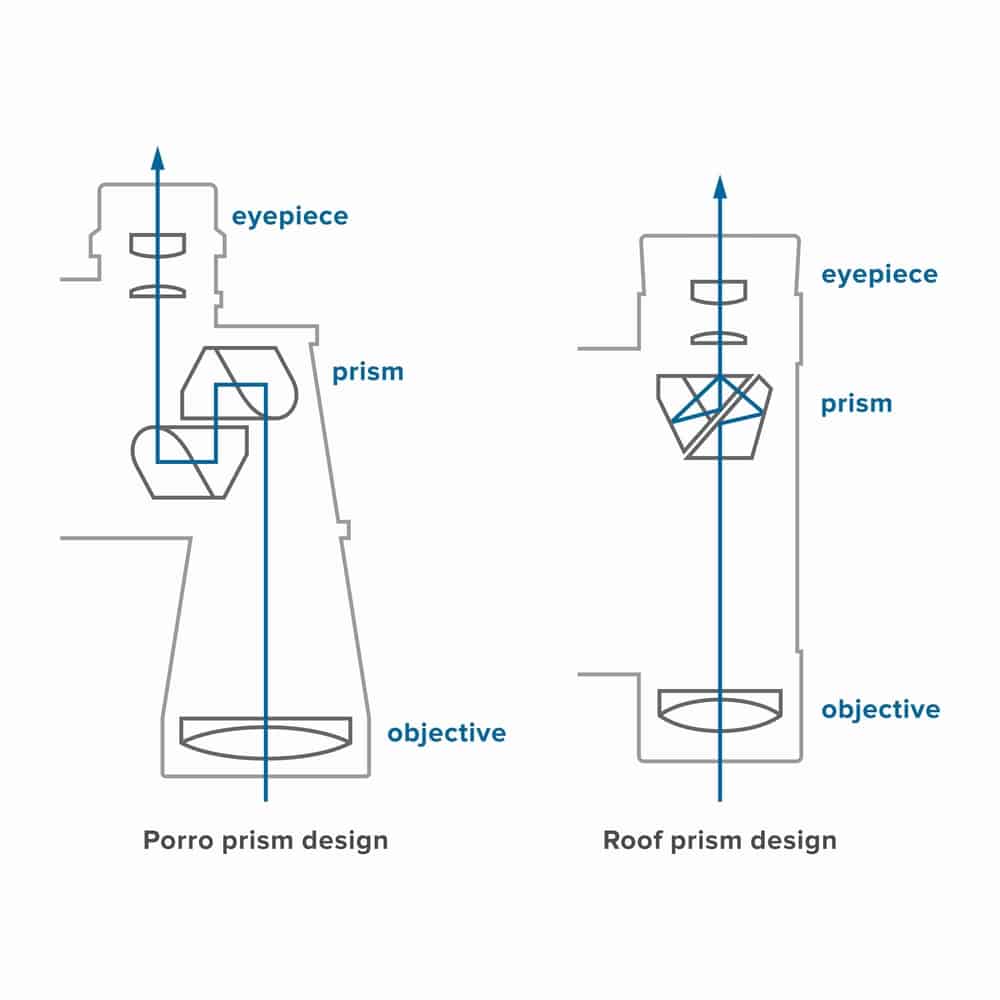
The majority of compact binoculars are roof prisms given that they’re inherently compact with straight tubes. Yet, there are many Porro models available as well.
Look for compact binoculars with a roof prism to minimize the overall size of the optics. Where cost is the primary concern, opt for a Porro prism and put the money toward high-quality lenses.
Brightness & Sharpness
Birding binoculars need to provide a view that is bright, sharp, true to color, and distortion-free so you’re able to see the tiniest of details – even in poor light. These attributes are dependent on the type and quality of the glass used for the lenses and prism as well as the skill of the grinder & polisher. Swarovski Optiks has been manufacturing binoculars since 1949 and is recognized as the Cadillac producer of binoculars states “The better the optics, the less you can see yellow or bluish color fringing”.
Look for compact binoculars made by a reputable manufacturer who’s been in the optics business a long time, and understands and applies grinding and polishing techniques (e.g. Swarovski, Nikon, Vortex, Leica, Bushnell).
The prism material is also key. BAK4 (Barium Crown glass) is considered the Cadillac of materials transmitting light better than the most widely used material, BK7, and the less commonly used SK15.
The prism and lens coatings also play a key part in the resulting view as they work to reduce glare & reflections while increasing light transmission so colors are bright and true.
Look for compact binoculars where the lens is at least multi-coated. Even better is a pair that’s fully multi-coated. On binoculars with a roof prism, check to ensure a “phase-correcting” coating has been applied. Also, avoid binoculars with a zoom feature as they inherently sacrifice brightness for the ability to zoom.
Single Focus Control
The binoculars must be able to focus quickly because birds move fast without warning.
Look for binoculars with a single focus control rather than one control on each tube.
Field of View
The field of view must be wide enough to locate the bird quickly. Earlier, we established that the field of view gets smaller as the magnification increases so the biggest magnification isn’t always better – especially when birds are the subject. Compact binoculars with a magnification range of 7x-9x will generally have a FOV between 220 – 430.
Look for compact binoculars with the largest field of view among the optics meeting the other criteria (e.g. magnification, objective lens). If model A has 8×25 magnification & objective lens plus all the key features and model B has the same numbers and features, select the pair with the highest field of view.
Fog-proof & Waterproof
Fog-proof and waterproof are key features to look for since you’ll be outdoors and should be prepared for whatever Mother Nature wields your way (think humidity and rain showers).
Look for binoculars that are waterproof and fog-proof.
Water-resistant is the next best thing to waterproof as it protects against a light sprinkle of rain but waterproof is best.
Eye Relief
If you wear glasses, pay attention to the amount of eye relief the optics have. Eye relief is a value in millimeters that represents the distance your eyes can be from the eyepiece and still be able to enjoy the full field of view.
Look for binoculars with a minimum eye relief of 15mm.
Warranty
A great warranty protects your investment and reduces the chances of going without the binoculars while you save up for a replacement pair.
With the exception of a budget pair of compact binoculars, look for a warranty with a minimum of one year. The more expensive the binoculars the better the warranty should be such as a 10+ year warranty – better year, a lifetime warranty.
Compact Size
A pair of compact binoculars should be light, either small or folded into a small unit, and easy to slip into a pocket for fast retrieval.
Look for binoculars weighing less than 1 pound, lens diameter of less than 30mm, and less than 5″ long and 5″ wide.
Conclusion
It can be overwhelming to find a compact binocular that’s suitable for birding. I was in the same position which is why I dove into researching and analyzing the top compact binoculars myself.
I learned that whether you’re an all-around birder who likes to venture to parks and nature centers to satisfy your “birding” need or someone who just enjoys their backyard, there’s a compact binocular for you.
- The Zeiss Terra ED 8×25 is for you if you want an overall excellent compact binocular for birding.
- The Swarovski CL Pocket 8×25 or Swarovski Curio 7×21 are for you if this is the only pair of compact binoculars you ever want to purchase and are willing to pay for it.
- The Leica Ultravid BR 8×20 is for you if you want and deserve premium compact binoculars but don’t want to pay more than the price of a Swarvoski.
- The Nikon Aculon T02 8×21 is for you if you’re new to birding or new to binoculars and want a budget-level pair that folds into a small package and is willing to sacrifice some image quality.
- Either the Vortex Vanquish 8×26 or Nikon ProStaff 8×25 ATB is for you if you’re new to birding or just want a super affordable pair of compact binoculars, don’t mind the Porro prism size/shape, and are willing to sacrifice some image quality.
Happy Birding!
Are you looking for a gift for the newbie birdwatcher on your list? Check out The 7 Best Gifts for Beginner Birdwatchers

